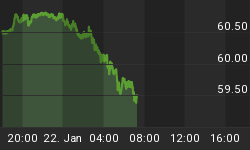
• The late bubble has been the greatest on record and is the accumulated consequence of 95 years of Fed stimulation.
• Every experiment in currency depreciation ends with great market and political volatility.
• Keynes thought that he had invented a way to end credit contractions. But, because he was ignorant of market history he didn't know that almost every century has an example of some intellectual having a personal revelation about avoiding or prematurely ending a post-bubble contraction. An early example occurred with the post-1618 bust, when in 1622 Missleden prescribed adding credit to a credit contraction.
• The forever-esteemed editor of The Economist, Walter Bagehot, wrote in 1873: "A panic in a word, is a species of neuralgia, and according to the rules of science you must not starve it. The holders of the cash reserve must be ready...to advance it most freely for the liabilities of others."
No problems, if the right thing is done at the right time. As noted below, the subsequent period was described as "The Great Depression" and it ran from 1873 to 1895.
Actually, such sound advice had been implied by the Bank of England in a report following the big problem in 1825: "We lent by every possible means and in modes we have never adopted before; we took in stock on security, we purchased Exchequer bills, we made advances on Exchequer bills, we not only discounted outright, but we made advances on Exchequer bills of exchange to an immense amount, in short, by every possible means...seeing the dreadful state in which the public were, we rendered every assistance."
The subsequent general contraction endured from the climax of the bubble in 1825 until the mid 1840s.
• At the height of the 1929 mania the Fed with its "elastic" currency was celebrated, as the old system was condemned. The following is by John Moody:
"The old breeder of financial panics, the National Banking Law, which had been a menace to American progress for two decades, has now been replaced by a modern, scientific reserve system which embodied an elastic currency and an orderly control of the money market."
In so many words, "nothing could go wrong".
• Similar confidence in the old system prevailed as the 1873 bubble came under the usual credit changes that signal a top. A leading New York paper, the Herald, editorialized:
"True, some great event may prick the commercial bubble of the hour, and create convulsions; but while the Secretary of the Treasury plays the role of banker for the entire United States it is difficult to conceive of any condition of circumstances which he cannot control. Power has been centralized in him to an extent not enjoyed by the Governor of the Bank of England. He can issue the paper representatives of gold, and count it as much as the yellow metal itself. [He has] a greater influence than is possessed by all the banking institutions of New York."
In so many words, "nothing could go wrong".
Ironically, the editorial contained some totems that are still deemed to have great power. Even today, for some the terms "centralized", "banker for the U. S." and "influence" provide considerable assurance. On the initial panic into late September, the Herald editors extolled abiding confidence in the Treasury System with "A crisis in our financial dealings has been met and passed without loss of confidence... Here are growth, understanding, [and] increased knowledge."
As it had done on previous crises, the Treasury added liquidity and appeared to have avoided disaster. Under similar pressures, today's Fed and Treasury have injected liquidity and on the technical rebound into May such orthodoxy was celebrated: "The policy response to financial asset deflation was not only extremely fast, but extremely well coordinated. US policymakers deserve the Nobel Prize."
Back to all the confidences and issuance of liquidity in the early panics of the post-1873 contraction. The usual business cycle prevailed, but the recessions were stronger than the expansions. By 1884 leading economists began calling the prolonged contraction as the "The Great Depression". Although it ended in 1895, it was still being analysed as such until as late as 1939.
In order to preserve the notion about an infallible Federal Reserve System, it has been expedient to lay the blame on the Fed keeping too tight a policy during the post-1929 contraction. A couple of notes suggest otherwise:
• A Fed memorandum following the 1929 crash explained "The drain upon bank reserves was met in the classic way with a policy of free lending".
By free they meant liberal and this was exemplified by George Harrison, who was head of the New York Fed. As with today, the NY branch was huge compared to the whole Reserve System and Harrison, in discounting freely, exceeded his authority by a factor of six. This was conventional theory and practice and as with a number of examples did not prematurely end a post-bubble contraction.
• It seems that part of the tout at the top of the mania includes a celebration of whatever central banking or treasury system that happens to be in place. Naturally, with the recrimination and revulsion that goes with any post-bubble contraction the prevailing system will be criticized.
The first stage will likely be an ad hominem attack on the personalities running the Fed. Bernanke will be worked over for not providing the exact interest rate change that would have prevented the contraction. The rate change of the perfect amount made with perfect timing only exists in the imagination of interventionist economists.
Eventually, the contraction could become severe enough to prompt rigorous scrutiny. This would involve examining the history of central banking – not for policy errors, but for systemic inadequacy.
Link to Friday, August 1, 2008 'Bob and Phil Show' on Howestreet.com: http://www.howestreet.com/index.php?pl=/goldradio/index.php/mediaplayer/917
















